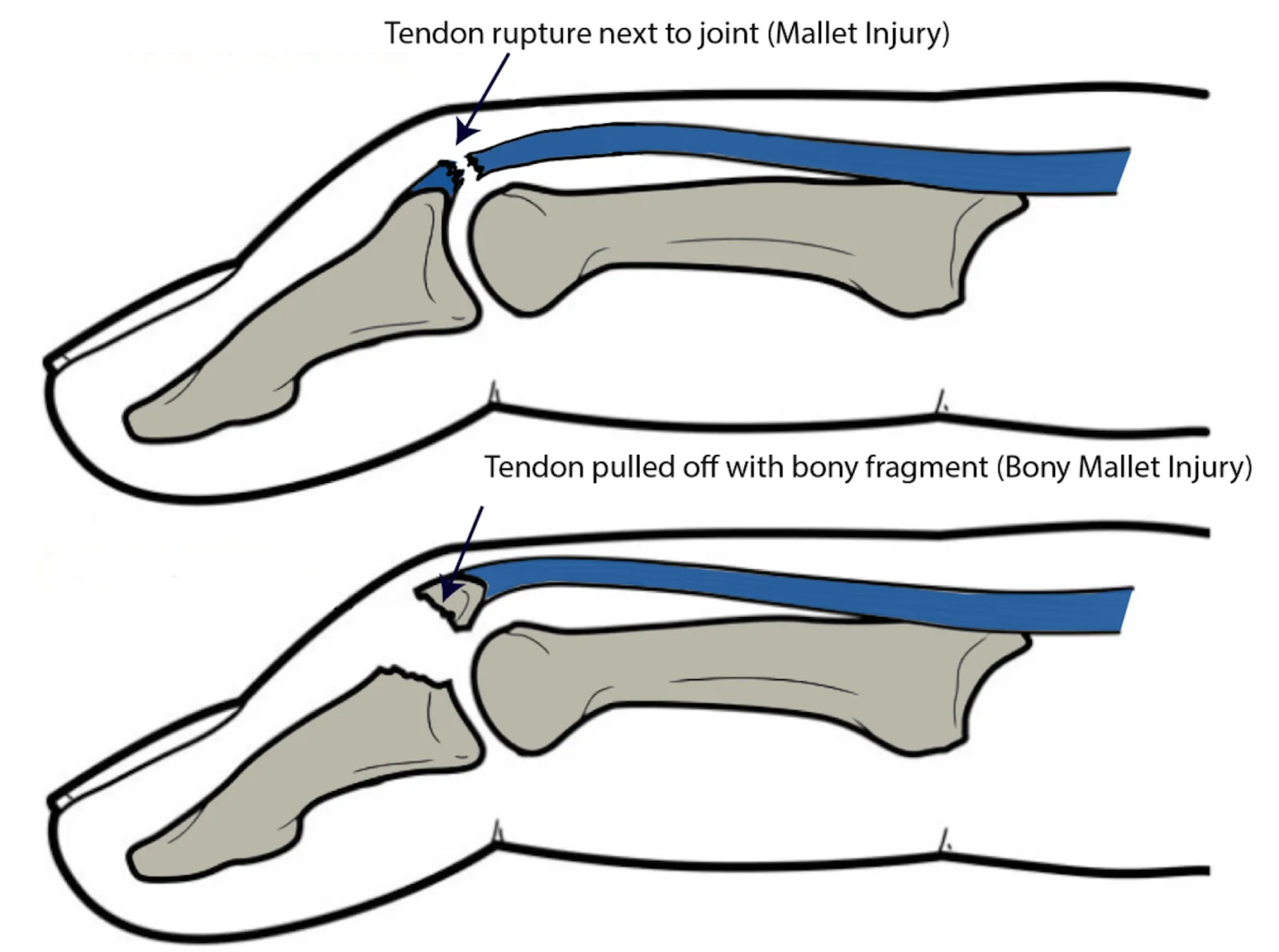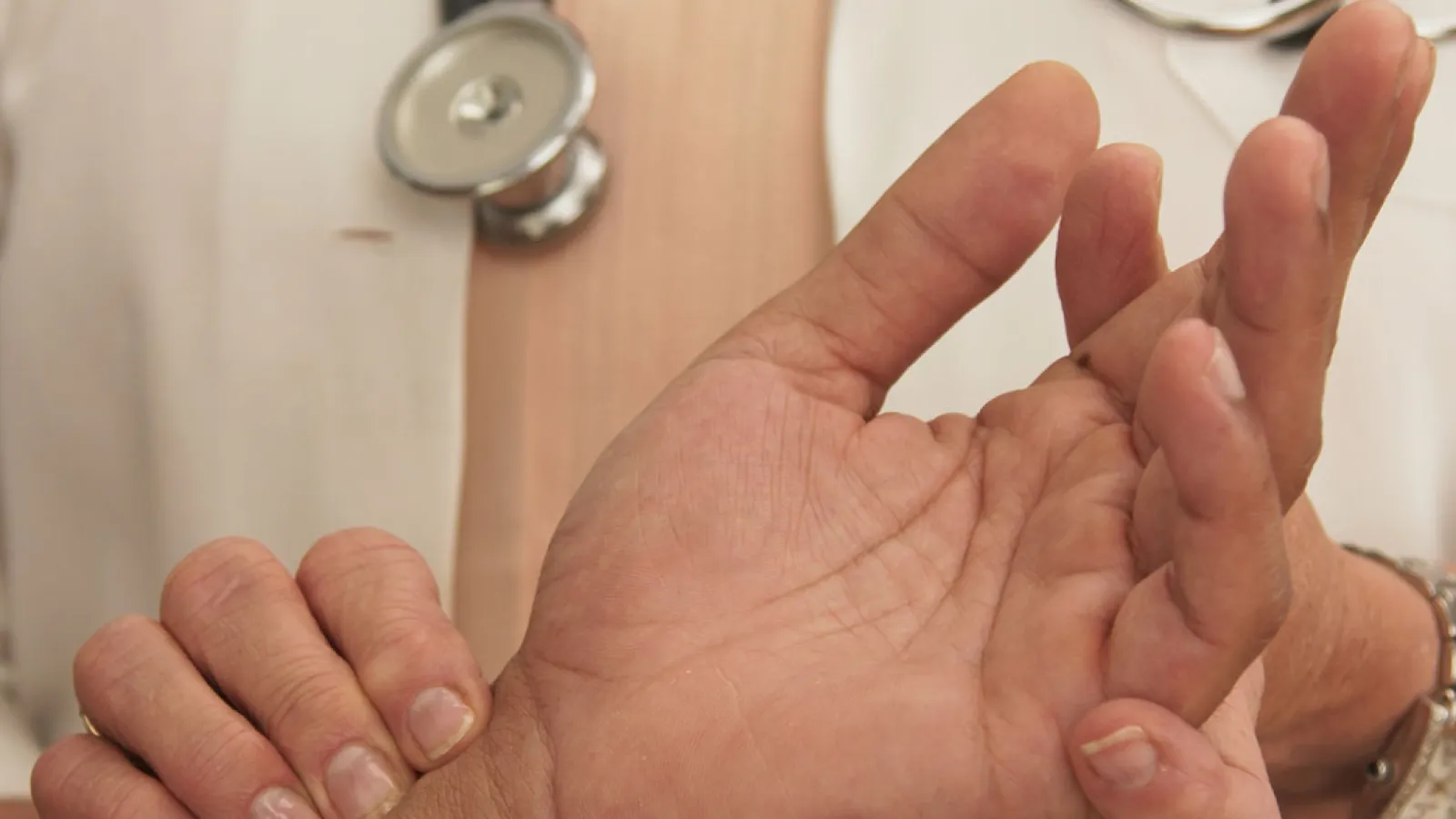Twenty-five percent of sports injuries involve
the hand and wrist with incidence of this growing in competitive high school
and collegiate athletics along with a more active general population. It's
important to know that delaying treatment of a hand or wrist injury can be
significant. Having knowledge of these injuries can prevent long term
complications and provide a quicker return to sport or activity.
A mallet finger injury occurs when the terminal extensor tendon comes unattached from the distal phalanx of the finger. The result of this is the tip of the injured finger drooping and the individual being unable to fully straighten it. This injury happens when there is forceful flexion to an extended DIP joint, whether it be from a basketball hitting the tip of a finger or just swatting a fly from your face. The easiest way to identify a mallet finger is the drooping of a fingertip, but it may also present with swelling over the injured area. An X-ray can identify if there was a bony avulsion fragment that occurred with the injury.

The good news regarding a mallet
injury is that they are almost always treated conservatively, even with a bony
avulsion fragment. A low-profile splint that is custom made will place the
fingertip into hyperextension to allow the tendon to heal back together. Full
time splinting is recommended for at least six weeks with night wearing of the
splint recommended for an additional six weeks. The custom splints can be adjusted
by a therapist to account for any fluctuation in swelling of the finger for the
length of time the individual wears it.
To learn more about the author, Matt Angle, OT, click here:

